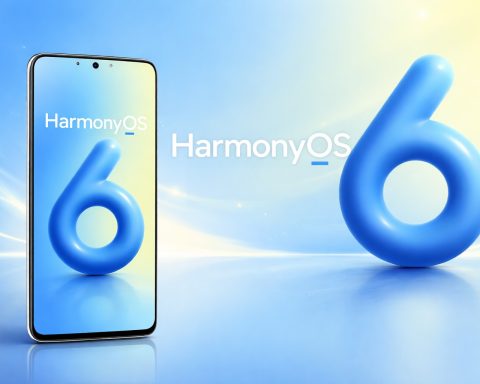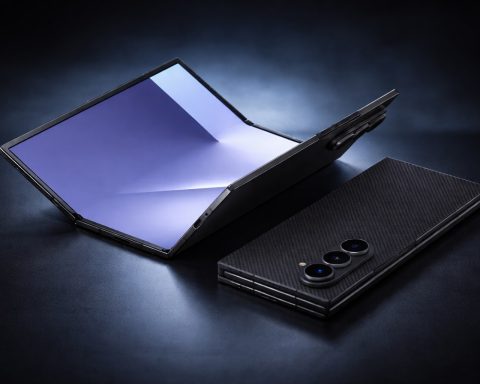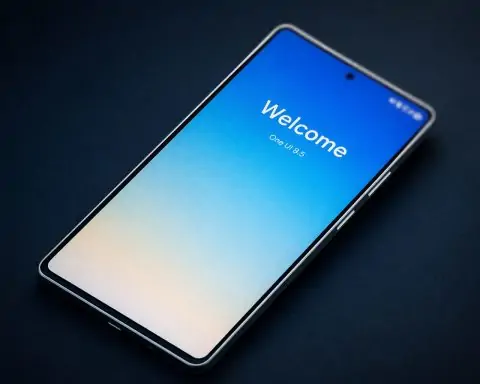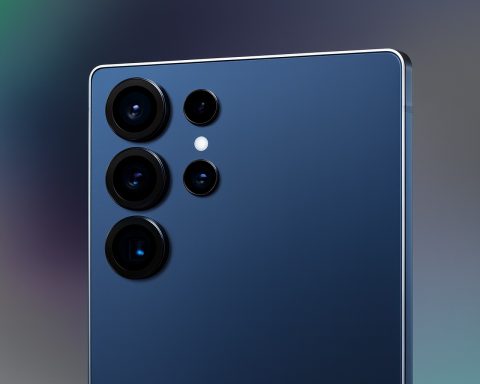Key Facts
- iPhone 17 battery specs leaked: A regulatory filing revealed all iPhone 17 models’ battery capacities – including the first iPhone ever above 5,000 mAh [1] – just days before Apple’s “Awe Dropping” launch event on Sept 9.
- Apple Watch SE 3 confirmed: A last-minute leak from a reliable source tipped that Apple will unveil Apple Watch SE 3 and Watch Ultra 3 alongside four new iPhones, cementing rumors of multiple new Apple wearables at the event [2].
- Google’s Pixel gets a makeover: Google rolled out its September Pixel Feature Drop, bringing the Pixel 10’s new Material 3 Expressive design to older Pixel 6 and up phones [3]. Pixel Buds Pro 2 gained Adaptive Audio and even head-gesture controls, while Pixel Watch now auto-displays Maps directions during navigation [4].
- Samsung software roadmap leaks: An alleged schedule for Samsung’s One UI 8 (Android 16) update surfaced, hinting the Galaxy S25 series will get the stable update around September 18 [5]. Samsung watchers caution these dates aren’t official – Samsung only confirmed the One UI 8 rollout begins in September with no exact dates yet [6].
- Huawei’s tri-fold comeback: Huawei launched the Mate XTs, a tri-fold smartphone with a 10.2-inch display that folds down to a phone, powered by Huawei’s first new Kirin 9020 5G chip in four years [7] [8]. CEO Richard Yu touted a “36% overall performance boost” from the chip and HarmonyOS synergy [9].
- Xiaomi 16 flagship leak: Multiple live images of the upcoming Xiaomi 16 Pro Max leaked online, showing a secondary rear display (reviving the Mi 11 Ultra’s mini-screen) and revealing a likely launch in China between September 24–26 [10]. It’s expected to debut Qualcomm’s new Snapdragon 8 Elite 2 chip and run Xiaomi’s HyperOS 3 (Android 16) [11].
- Regional launches:Oppo confirmed its mid-range F31 series will debut in India on Sept 15, with three models all boasting huge 7,000 mAh batteries [12]. And Nokia-phone maker HMD Global launched the ultra-budget HMD Vibe 5G (under ₹10,000) in India, aiming at Gen Z with a “claim your mood” ad campaign and lifestyle features [13] [14].
Apple: Last-Minute Leaks and Event Hype
Apple’s big fall event is just around the corner – scheduled for Tuesday, Sept 9 – and late-breaking leaks have spilled key details on what’s coming. Battery capacities for the entire iPhone 17 lineup leaked via a Chinese regulatory database [15] [16]. The data (shared by the leaker ShrimpApplePro) suggests the iPhone 17 Pro Max will pack a 5,088 mAh battery, making it the first iPhone ever to cross the 5,000 mAh threshold [17]. That would be about 8% larger than the iPhone 16 Pro Max’s battery, promising a notable boost in longevity. On the other end, the super-thin iPhone 17 “Air” (Apple’s rumored new ultra-slim model) appears to have roughly a 3,000 mAh battery [18]. While 3,000 mAh is quite low by modern standards, Apple is reportedly mitigating this with more efficient chips (the A19 and a new C1 modem) and even planning a special battery case for the iPhone 17 Air to ease battery life concerns [19].
Another last-minute leak on Sept 7 all but confirmed Apple’s wearables lineup for the event. A private X (Twitter) account with a proven track record revealed that Apple Watch Series 11, Apple Watch Ultra 3, and Apple Watch SE 3 are all incoming [20] – each reportedly running a new S11 chip based on the same architecture as the S9/S10 chips [21]. In other words, Apple is updating all three Watch tiers this cycle, including the first new SE model since 2022 [22]. This leak adds further credibility to reports that multiple Apple Watches will share stage time with the new iPhones. It also mentioned four new iPad Pro models with M5 chips are in development (likely for a later announcement) [23], suggesting Apple’s fall product blitz will extend beyond just phones.
Meanwhile, the rumor mill has painted a clear picture of Tuesday’s event. Apple’s “Awe Dropping” keynote is expected to unveil four iPhone 17 models (standard, Plus/Air, Pro, and Pro Max) alongside the Watch Series 11, Watch Ultra 3, and AirPods Pro 3 [24]. Leaks indicate the Pro iPhones are getting a mild redesign – notably a new horizontally elongated wireless charging/magSafe area on the back [25] – and camera upgrades like a 48MP telephoto lens. We’ve also seen price estimates (J.P. Morgan analysts predict slight hikes, e.g. the base iPhone 17 starting around $799) [26]. All will be revealed in a matter of hours. Until then, these eleventh-hour leaks have set the stage for Apple’s biggest launch of the year, from record battery sizes to an unexpectedly crowded Apple Watch lineup.
Google & Pixel: Updates Roll Out Post-Pixel 10 Launch
Google’s Pixel ecosystem made headlines with new software updates and features following the recent Pixel 10 launch. This week Google released its September Pixel Feature Drop, which delivers the Pixel 10’s flashy “Material 3 Expressive” UI design to older devices [27]. Starting now, Pixel 6, 7, 8, and 9 series phones (as well as the Pixel Tablet) are receiving an Android 16 update that refreshes the whole look and feel of the interface [28]. The Material 3 Expressive design brings a more colorful, bubbly aesthetic and more personalization – for example, iPhone-like contact posters that let users set custom call screen designs for their contacts [29]. Google first previewed this youthful new design language back in May, and launched it on the Pixel 10 out of the box last month [30]. Now, within just weeks, they’re pushing the new UI to previous-gen Pixels so the whole Pixel family gets a consistent experience.
Beyond the interface makeover, the feature drop adds several functional upgrades. Google is rolling out a big firmware update to its latest earbuds, the Pixel Buds Pro 2, enabling new audio capabilities [31]. Notably, the Buds Pro 2 are getting Adaptive Audio, which automatically adjusts volume based on your environment noise, plus a Loud Sound alert that dampens sudden spikes (protecting your ears when, say, a siren blares) [32]. The Buds will even support subtle head gesture controls – you can nod to accept a call or shake your head to ignore one [33], truly a futuristic party trick. Another neat addition: if you start walking or biking navigation on your phone, Google Maps will automatically pop up on your Pixel Watch (or other Wear OS smartwatch) without any extra steps [34]. This “hands-free” navigation handoff means you can glance at your wrist for directions instead of constantly pulling out your phone. Google says these updates are rolling out now and will continue over the next couple weeks across carriers [35].
All of this comes on the heels of Google’s Pixel 10 series debut, which took place at the IFA tech show in late August. The Pixel 10, Pixel 10 Pro and larger Pixel 10 Pro XL are Google’s newest flagship phones, and notably the first Pixels to include Qi2 magnetic wireless charging (akin to Apple’s MagSafe) [36]. That small hardware addition made a big splash at IFA – suddenly, the Pixel can use magnetic chargers and accessories that snap on. In Berlin, Qi2 gadgets were seemingly everywhere: “I’ve been like a kid in a candy store,” one tech journalist gushed about seeing hundreds of new magnetic accessories now that Pixel 10 “finally” supports magnets [37]. With Qi2’s faster 25 W charging spec and a wave of new stands, battery packs, and mounts on display, Pixel 10 users will soon have an ecosystem of toys that previously catered only to iPhones [38].
Overall, it’s an exciting time for Pixel fans – new phones, new look, new accessories. And Google isn’t slowing down: the Android 16 QPR1 update also began rolling out (alongside the Pixel Drop) with many under-the-hood improvements [39]. The Pixel team is clearly trying to keep momentum and mindshare as Apple’s iPhone event looms. So while iPhone users await their new devices, Pixel owners are already enjoying a fresh coat of paint and smarter features on their existing phones.
Samsung: One UI 8 Update Leak and Security Patches
Samsung didn’t launch new phones this week, but it still grabbed headlines thanks to Android 16 update buzz. Samsung’s next major software upgrade is One UI 8, their Android 16-based interface, and Galaxy users are eagerly awaiting its arrival. On Sept 6, a purported One UI 8 release schedule leaked online, offering a detailed (if unofficial) timeline for dozens of Galaxy models [40] [41]. According to the leaked roadmap, Samsung plans to start updating its latest flagships – the Galaxy S25 series – on September 18, followed by recent devices like the S24 and A56 on September 25 [42]. The list stretches into October and early November for older models, even including mid-rangers and tablets. For example, the leak claims Galaxy Z Fold 6 and Flip 6 will get One UI 8 in early October, after the S23 series [43], and that popular midrange phones (Galaxy A54, A34, etc.) would see updates by mid-late October [44] [45]. If true, it’s an aggressive rollout – possibly dozens of models updated in about 6–8 weeks.
However, Samsung experts urge caution about this leaked timeline. The roadmap was posted by a third-party tracker site not affiliated with Samsung and focused on one region [46]. It’s very possible some dates are speculative or for specific countries. In fact, Samsung itself has confirmed only that One UI 8 will begin public rollout in September (starting with the S25 series) but has not announced exact dates or the order of device updates [47]. In other words, yes – the wait is almost over, but don’t mark your calendar in pen for those exact days. One Samsung watcher noted that given Samsung’s fast update pace in recent years, the broad sequence (newest flagships first, older ones soon after) is believable, but the specific dates could shift. “It’s probably best to just sit back, relax, and wait for Samsung to do its thing. It’s not like we have to wait for long now,” a SamMobile analyst quipped, reminding users not to get too hung up on an unofficial schedule [48].
In the meantime, Samsung has been busy with its monthly patches and betas. The company detailed its September 2025 security patch, which fixes dozens of Android vulnerabilities and some Samsung-specific issues [49]. And for those who can’t wait for One UI 8, Samsung has been expanding the One UI 8 beta program for devices like the Galaxy S23 and S24, letting enthusiasts test-drive Android 16 early [50]. Early beta users have spotted hints of new features – e.g. refined notification panels for tablets [51] and even references to an unannounced “Galaxy Z TriFold” device in the code [52] (perhaps Samsung has its own tri-fold concept in the works). But official news on that front is scant.
Lastly, though hardware news was quiet, Samsung did recently hold an “Galaxy Unpacked” event on Sept 4 (just ahead of Apple’s) where it launched the Galaxy S25 FE and Galaxy Tab S11 series [53]. Those affordable “Fan Edition” devices are now hitting select markets, packing high-end specs (like a 4,900 mAh battery in the S25 FE) at lower prices [54]. Samsung’s early-September Unpacked show was seen by some as a strategic move to get its launches in before Apple’s. So while this weekend itself had no new Samsung phone announcement, Galaxy fans have both new devices (FE models) and new software on the horizon. By all indications, One UI 8’s official rollout is imminent – perhaps just days away for the first users – even if a leaked roadmap might have jumped the gun on exact timing [55].
Xiaomi: Big Batteries, Second Screens, and Launch Rumors
China’s Xiaomi is gearing up for its next flagship release, and the rumor mill has been in overdrive. Leaks over the weekend offered an exciting sneak peek at the Xiaomi 16 series, expected to debut in China later this month. Multiple leaked live photos of the Xiaomi 16 Pro Max model circulated on Weibo and X, showing a striking design change: a secondary display on the back [56] [57]. This small rear screen is integrated into the camera island – a throwback to the Xiaomi Mi 11 Ultra’s tiny notification display. In the images, the 16 Pro Max’s camera module spans the top half of the phone’s back in a wide rectangular visor, with three camera lenses and what appears to be a mini screen beside them [58] [59]. According to one source, the person holding the device in the leak is actually a high-ranking Xiaomi executive, which adds credibility and suggests these images are legit prototypes [60]. If true, Xiaomi is reviving the rear mini-display concept to allow at-a-glance info and possibly selfie previews using the main cameras – a niche but beloved feature for power users.
Specs-wise, reports point to an end-of-September launch for the Xiaomi 16 family. A tip from multiple leakers (and echoed by outlets like Notebookcheck and Gadgets360) claims the Xiaomi 16 and 16 Pro (and Pro Max) will be unveiled in China between September 24 and 26 [61]. Notably, this timing coincides with Qualcomm’s next flagship chipset announcement. In fact, the Xiaomi 16 Pro Max is believed to be the very first phone powered by the upcoming Snapdragon 8 Elite 2 SoC (also referred to as Snapdragon 8 Gen 5) [62]. Xiaomi has a history of being first out of the gate with new Qualcomm chips, and if the dates line up (Qualcomm’s event is rumored for Sept 23 [63]), Xiaomi might reveal its new phone literally the next day with that chip on board. The leaked info also suggests the Xiaomi 16 series will run Xiaomi’s HyperOS 3 software, based on Android 16 [64]. HyperOS is Xiaomi’s latest replacement for MIUI, and version 3.0 would debut in these phones, presumably bringing further refinements to the UI/UX and integration across Xiaomi’s ecosystem.
Another juicy tidbit: Huge batteries. One leak claims all three Xiaomi 16 models will pack significantly larger batteries than last year. In fact, a source told Notebookcheck that every variant (including base and Pro) will feature batteries well over 5,000 mAh [65]. This aligns with Xiaomi’s trend of pushing battery capacity; the current Xiaomi 15 Pro already has around 5,000 mAh, so we might see 5,500 mAh or more in the 16 Pro Max. Such capacity, combined with Xiaomi’s famously fast charging, could make the 16 series real endurance champs. While battery specs aren’t officially confirmed, the “7,000 mAh” figure has been floated for one of the models in some rumor circles – which would be unprecedented for a mainstream flagship, so take that with a grain of salt. More conservatively, a 5,500+ mAh battery in a top-tier phone would still handily beat most rivals. Xiaomi itself hasn’t commented, of course, but expectations are sky high (literally, in mAh).
In addition to flagships, Xiaomi-related brands are making news: Redmi just launched the Redmi Note 13 series in some markets and announced HyperOS updates for those devices [66]. And on the software front, Xiaomi published its September 2025 update roadmap for HyperOS on existing devices [67], ensuring models like the Xiaomi 14 and Redmi K60 get the latest features this month. All told, Xiaomi is poised for a big finish to 2025 – we’re only weeks away from seeing if the Xiaomi 16 series lives up to the leaks with its secondary screens, massive batteries, and cutting-edge silicon. Stay tuned for the official word in late September [68].
Huawei: Pushing Foldable Boundaries with the Mate XTs
While Samsung experiments with folding phones of the bi-fold variety, Huawei just one-upped the competition by releasing a tri-folding smartphone. On Sept 4 (just before this weekend), Huawei officially unveiled the Mate XTs Ultimate Design – the company’s second-generation tri-fold device and a true engineering marvel [69]. As a tri-fold, the Mate XTs has two hinges allowing it to unfold from a phone into a tablet of unprecedented size. When fully opened, it boasts a 10.2-inch X-True display [70], essentially giving you a tablet-plus experience. That screen can bend in two places: fold one segment in to create a more standard 7.9-inch tablet mode, or fold both to end up with a 6.4-inch phone form factor [71]. Huawei first pioneered this triple-hinge concept with the original Mate XT last year, and remains the only manufacturer with a shipping tri-fold phone [72]. The Mate XTs shows Huawei doubling down on this niche, hoping that ultra-flexible devices might carve out a market of their own.
Under the hood, the Mate XTs is also a significant technological comeback story for Huawei. It is powered by the new Kirin 9020 chipset – Huawei’s first flagship in-house mobile chip in about five years to feature 5G capabilities [73] [74]. Due to U.S. sanctions, Huawei’s Kirin chips (made by HiSilicon) disappeared after 2020, but the Kirin 9020 signals a resurgence, likely manufactured on a Chinese 7 nm process. At the Shenzhen launch event, Huawei’s Consumer CEO Richard Yu highlighted this as a major milestone, proudly stating the Mate XTs’ Kirin 9020 and HarmonyOS software deliver a “36 percent overall performance boost” thanks to tight hardware-software-cloud integration [75]. In essence, Huawei claims the new chip + OS combo makes the Mate XTs dramatically faster than its predecessors (and presumably faster than equivalent Snapdragon-powered models, though direct comparisons weren’t given). Importantly, it also means Huawei has 5G phones again – the Mate XTs supports 5G networks via the Kirin 9020, bypassing the need for Qualcomm chips.
In terms of features, the Mate XTs is a luxury powerhouse. It carries 16 GB of RAM and comes in three storage tiers (256 GB, 512 GB, 1 TB) priced at ¥17,999–21,999 (approximately $2,520 to $3,080) in China [76] [77]. The build uses premium materials like vegan leather finishes, and Huawei introduced new white and purple color options in addition to classic black/red [78] [79]. Despite the complex design, they kept weight in check for usability. The phone packs a 5,600 mAh silicon-anode battery to support that big screen, and it impressively supports 66 W wired charging and 50 W wireless charging for quick top-ups [80] [81]. The camera system is no slouch either: a triple-lens array with a 50 MP main camera (variable aperture), a new 40 MP ultra-wide, and a telephoto offering up to 5.5× optical zoom [82] [83]. Essentially, Huawei threw everything and the kitchen sink into this device to justify its ultra-premium positioning.
Huawei is also touting unique software capabilities on the Mate XTs. Because of its expansive screen, the Mate XTs can run PC-grade desktop software directly [84]. At the launch, Huawei demonstrated running full office productivity apps, multi-window multitasking “like a computer,” and even a special financial analytics program leveraging data from 15,000 stock monitoring stations [85] [86]. Additionally, the Mate XTs integrates with HarmonyOS 5.1’s ecosystem features – Richard Yu announced that HarmonyOS 5 now runs on over 14 million devices already [87]. One particularly novel feature: the phone ties into China’s national earthquake alert system, providing early warnings of seismic activity with “second-level” precision across regions [88]. It’s a very specific local feature, but underscores how Huawei is leveraging its software platform in ways Google or Apple cannot (at least in China).
In summary, the Mate XTs represents Huawei swinging for the fences: pushing form-factor innovation (with the only tri-fold on the market) and simultaneously re-asserting chip independence with the Kirin’s return. For now it’s a China-only device, and global prospects remain uncertain given Huawei’s trade issues. But it undeniably stole some spotlight in the mobile world this week. As one tech site noted, Huawei has effectively “redefined the ultra-premium phone” with the Mate XTs, creating something that’s equal parts conversation piece and technological statement. With a price over $2500 and extreme niche appeal, it’s not about volume sales – it’s about showing Huawei is still in the game at the cutting edge.
Other Brands: Oppo’s Mega-Battery Phones, and HMD’s New Budget 5G
Beyond the big players, a few regional and niche brands made news between Sept 7–8:
- Oppo F31 Series Announced for India: Chinese maker Oppo is launching its latest F-series mid-range phones in India on September 15. The company teased that the Oppo F31 5G, F31 Pro 5G, and F31 Pro+ 5G will be unveiled at a virtual event (12 pm IST) [89] [90]. Oppo’s marketing is calling them “Durable Champion” phones – and with good reason. According to Oppo, all three models will feature 7,000 mAh batteries [91], an unusually high capacity even in the budget segment (most mid-range phones have ~5,000 mAh). If true, these could offer multi-day battery life, a major selling point for consumers who value endurance. The company also hinted at robust build qualities, with mentions of IP ratings like IP66/68/69 for water and dust resistance [92] – suggesting these phones might survive splashes, dust, and even high-pressure water jets, which is rare in cheaper devices. Pricing isn’t official yet, but leaks suggest the base Oppo F31 5G will debut under ₹20,000 (about $240) in India [93] [94], making it slightly cheaper than its predecessor. With huge batteries and likely 5G-ready MediaTek or Snapdragon chips, the F31 lineup is positioned to compete aggressively in the sub-₹20k segment. Oppo seems to be targeting young, outdoorsy users who want phones that last and can handle rough use. We’ll know full specs and pricing in a few days, but this series is definitely one to watch in the Indian market.
- HMD Global’s New Vibe 5G – Gen Z on a Budget: HMD Global, the company behind Nokia-branded phones, is expanding its own-brand devices and just launched a budget 5G smartphone in India called the HMD Vibe 5G [95]. Aimed squarely at Gen Z and younger buyers, the Vibe 5G is HMD’s play in the sub-₹10,000 (~$120) segment, bringing 5G connectivity at an ultra-affordable price. Rather than focusing on raw specs, HMD is pitching the Vibe as a “lifestyle phone.” They’ve rolled out a colorful marketing campaign with Bollywood actress Sanya Malhotra as ambassador, encouraging users to “claim your mood” with the device [96] [97]. In interviews, HMD India CEO Ravi Kunwar emphasized that the Vibe 5G is about user experience and self-expression. “It’s about how the device optimizes your day and improves your life, not just a single feature,” Kunwar said, explaining that the phone and its campaign are a brand refresh aimed at India’s Gen Z and young millennials [98]. In other words, HMD wants the Vibe 5G to be seen as cool, reliable, and tuned into the needs of young users (social media, content creation, etc.), rather than just another specs-for-cheap phone. The Vibe 5G launch also highlights HMD’s broader strategy: they now offer phones from entry-level (under ₹10k) to mid-range, and they’re leveraging partnerships with popular actors and AI-powered features to stand out [99]. While Nokia-branded phones have been HMD’s mainstay, the Vibe shows the company stepping out with its own HMD brand, likely to experiment with new ideas (the device reportedly ships with some unique AI features and digital wellbeing apps for its young audience). For parents or budget-conscious consumers, a 5G phone at this price with HMD’s promise of durability and clean Android might be quite appealing. It’s also noteworthy that HMD is diversifying: just last week at IFA, it introduced the HMD “Fuse” – a kids-oriented smartphone with built-in content filters that even prevent capturing or viewing explicit images [100]. That, along with the Vibe 5G, shows HMD carving out niche experiences in the smartphone space, leveraging their reputation for security and trust (a legacy of the Nokia name) in new ways.
- Other tidbits: Vivo, Realme, and other brands had smaller announcements (e.g. Vivo’s sub-brand iQOO teased a new gaming phone, and Motorola began sales of its previously delayed Xperia 1 VII in some regions after fixing software issues [101] [102]). Also, in industry news, India has overtaken China as the biggest smartphone exporter to the U.S. this year – a trend largely driven by Apple shifting iPhone production to India [103] [104]. New data shows 44% of U.S. smartphone imports in Q2 2025 came from India, while China’s share plummeted to 25% [105]. This is a significant supply chain shift, indicating how geopolitical factors are reshaping where phones are made. It’s not product news per se, but it underlines developments like Apple ramping up iPhone assembly in India (which in turn led to India-made iPhones being a huge portion of shipments this year) [106].
That wraps up this roundup of major mobile news from Sept 7–8, 2025. From Apple’s imminent reveals and Google’s software updates, to Samsung’s Android 16 plans and bold moves by Chinese and Indian brands, it’s been an eventful few days in the smartphone world. The coming week promises even more excitement as Apple’s and Xiaomi’s launches unfold. Be sure to check back for full coverage of those announcements – the fall phone season is just heating up!
References
1. www.macrumors.com, 2. www.macrumors.com, 3. www.theverge.com, 4. www.theverge.com, 5. 9to5google.com, 6. www.sammobile.com, 7. news.cgtn.com, 8. www.huaweicentral.com, 9. news.cgtn.com, 10. www.gadgets360.com, 11. www.gadgets360.com, 12. www.gadgets360.com, 13. nokianews.net, 14. nokianews.net, 15. www.macrumors.com, 16. www.macrumors.com, 17. www.macrumors.com, 18. www.macrumors.com, 19. www.macrumors.com, 20. www.macrumors.com, 21. www.macrumors.com, 22. www.macrumors.com, 23. www.macrumors.com, 24. www.techradar.com, 25. www.macrumors.com, 26. www.macrumors.com, 27. www.theverge.com, 28. www.theverge.com, 29. www.theverge.com, 30. www.theverge.com, 31. www.theverge.com, 32. www.theverge.com, 33. www.theverge.com, 34. www.theverge.com, 35. blog.google, 36. 9to5google.com, 37. 9to5google.com, 38. 9to5google.com, 39. 9to5google.com, 40. 9to5google.com, 41. 9to5google.com, 42. 9to5google.com, 43. 9to5google.com, 44. 9to5google.com, 45. 9to5google.com, 46. www.sammobile.com, 47. www.sammobile.com, 48. www.sammobile.com, 49. www.sammyfans.com, 50. www.sammobile.com, 51. 9to5google.com, 52. 9to5google.com, 53. www.hindustantimes.com, 54. www.tomsguide.com, 55. www.sammobile.com, 56. www.gadgets360.com, 57. www.gadgets360.com, 58. www.gadgets360.com, 59. www.gadgets360.com, 60. www.gadgets360.com, 61. www.gadgets360.com, 62. www.gadgets360.com, 63. www.gizchina.com, 64. www.gadgets360.com, 65. www.notebookcheck.net, 66. www.gadgets360.com, 67. xiaomitime.com, 68. www.gadgets360.com, 69. www.huaweicentral.com, 70. www.huaweicentral.com, 71. www.huaweicentral.com, 72. www.huaweicentral.com, 73. www.phoneworld.com.pk, 74. news.cgtn.com, 75. news.cgtn.com, 76. news.cgtn.com, 77. www.huaweicentral.com, 78. www.huaweicentral.com, 79. www.huaweicentral.com, 80. www.huaweicentral.com, 81. www.huaweicentral.com, 82. www.huaweicentral.com, 83. www.huaweicentral.com, 84. news.cgtn.com, 85. news.cgtn.com, 86. news.cgtn.com, 87. news.cgtn.com, 88. news.cgtn.com, 89. www.gadgets360.com, 90. www.gadgets360.com, 91. www.gadgets360.com, 92. www.gadgets360.com, 93. www.gadgets360.com, 94. www.gadgets360.com, 95. nokianews.net, 96. nokianews.net, 97. nokianews.net, 98. nokianews.net, 99. nokianews.net, 100. nokianews.net, 101. www.trustedreviews.com, 102. www.trustedreviews.com, 103. www.macrumors.com, 104. www.macrumors.com, 105. www.macrumors.com, 106. www.macrumors.com





